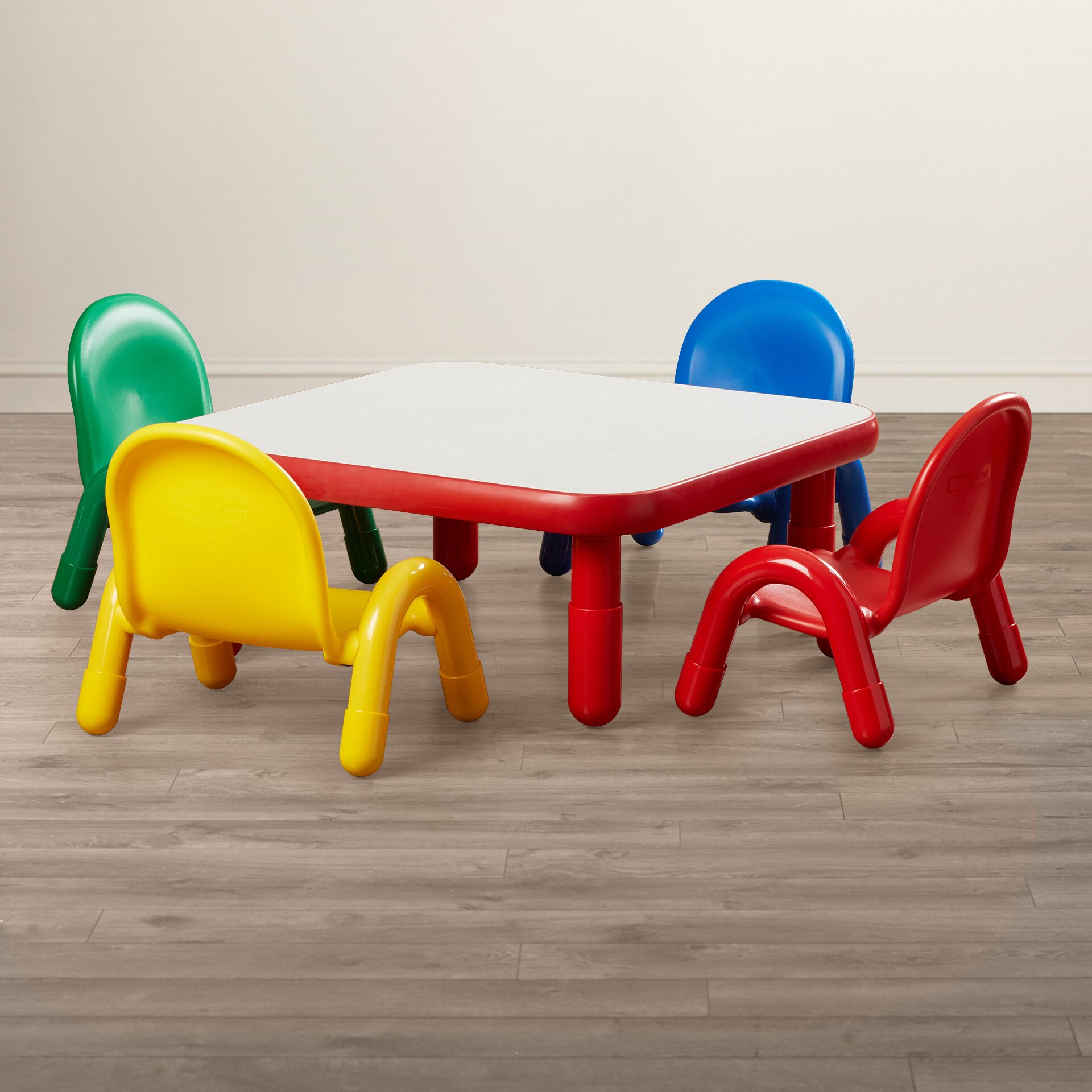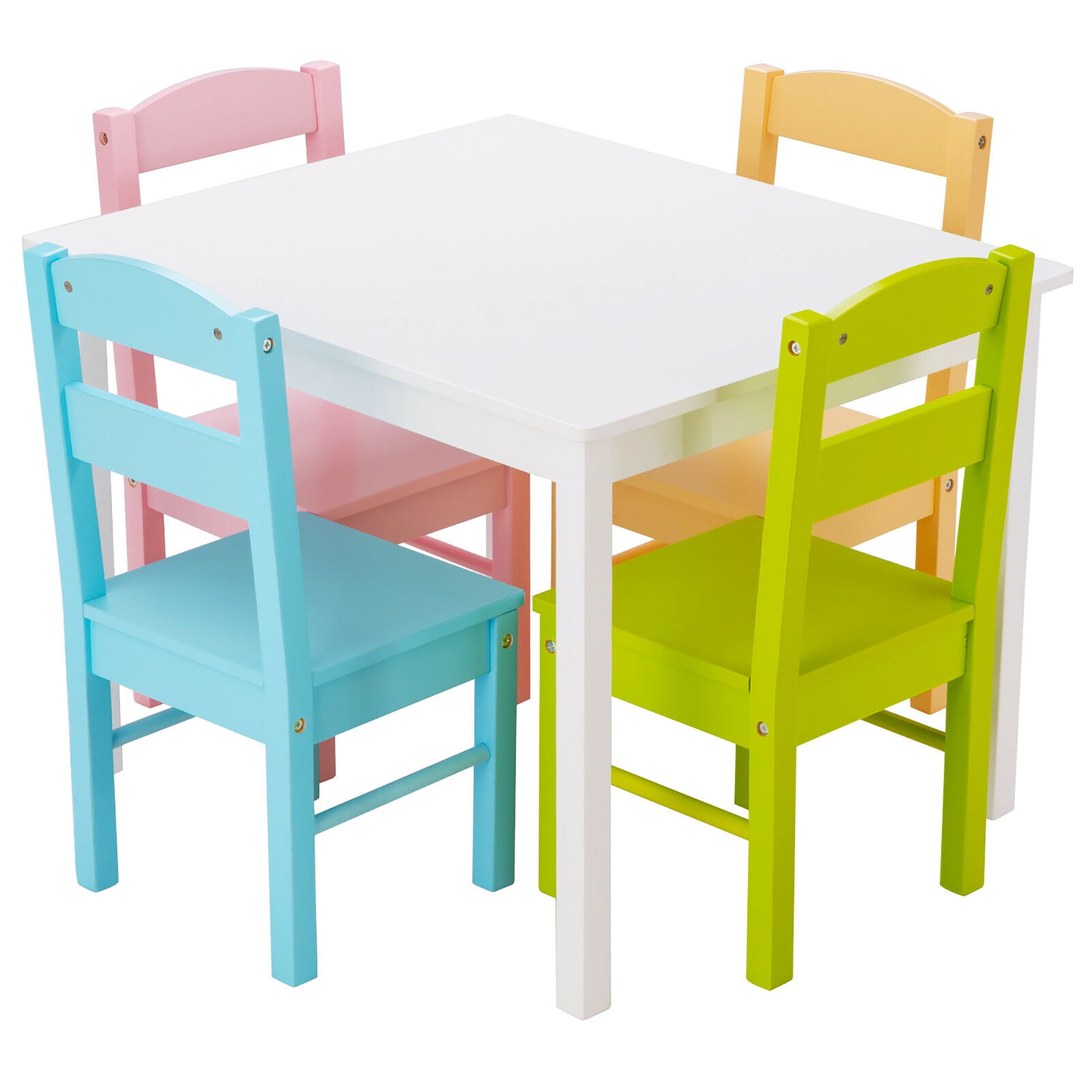Buying Guide

Selecting the perfect toddler table and chair set requires careful consideration of several factors to ensure both safety and suitability for your child. This guide provides a comprehensive checklist and essential information to aid in your decision-making process.
Safety Considerations
Prioritizing safety is paramount when choosing furniture for young children. Thorough inspection for potential hazards is crucial. Sharp edges, small parts that could be choking hazards, and unstable designs should be avoided. Look for sets that meet or exceed relevant safety standards, such as those set by the American Society for Testing and Materials (ASTM). Consider the stability of the table and chairs; they should be sturdy enough to prevent tipping and withstand enthusiastic play. Furthermore, ensure the materials used are non-toxic and free from harmful chemicals. The finish should be smooth and free of splinters or rough patches.
Durability and Material Selection
The durability of a toddler table and chair set directly impacts its longevity and value. Different materials offer varying levels of durability and require different maintenance approaches.
- Wood: Wood offers a classic and aesthetically pleasing option. Solid hardwood is generally more durable and resistant to damage than softer woods or manufactured wood products. However, wood requires regular cleaning and may be susceptible to scratches and dents. Regular application of a child-safe sealant can help protect the surface. Consider the type of wood; harder woods like maple or oak are more durable than softer woods like pine.
- Plastic: Plastic sets are lightweight, easy to clean, and typically less expensive. However, they may not be as durable as wood and can be prone to cracking or breaking with rough use. Choose plastic sets made from high-quality, impact-resistant materials. Avoid plastic sets with sharp edges or corners.
- Metal: Metal sets, while durable, can be cold and potentially uncomfortable for toddlers. Ensure edges are smooth and rounded to prevent injuries.
Size and Space Considerations
Accurate measurement of the available space is essential before purchasing a table and chair set. The set should fit comfortably within the designated area without obstructing walkways or other furniture. Consider the height of the table and chairs in relation to your child’s height. The table should be at a height that allows your child to sit comfortably with their feet flat on the floor. A general rule is that the chair height should allow the child’s feet to rest comfortably on the floor, with their knees bent at a 90-degree angle. Measure the available space and the dimensions of the set carefully to ensure a proper fit. For example, a 24-inch diameter round table might suit a small space better than a larger rectangular table.
Age Appropriateness and Developmental Stages, Best toddler table and chair set
The age and developmental stage of your child significantly influence the choice of table and chair set. Younger toddlers may benefit from a lower table and chair set with a wider base for enhanced stability. As children grow, they might require a taller set to accommodate their increasing height and size. For instance, a set designed for 18-month-olds will be too small for a 3-year-old. Consider the activities your child will be engaging in at the table, as this will impact the size and design you select.
Checklist for Choosing a Toddler Table and Chair Set
Before purchasing a toddler table and chair set, consider the following checklist:
- Safety: Check for sharp edges, small parts, stability, and non-toxic materials.
- Durability: Evaluate the material’s resistance to wear and tear; consider wood, plastic, or metal options and their respective pros and cons.
- Size and Space: Measure the available space and the child’s height to ensure a proper fit.
- Age Appropriateness: Select a set appropriate for your child’s current developmental stage and future growth.
- Cleanability: Consider how easy the set is to clean and maintain.
- Aesthetics: Choose a design that complements your home’s décor and appeals to your child.
- Budget: Set a realistic budget before beginning your search.
Creative Activities for Toddler Table and Chair Sets: Best Toddler Table And Chair Set

A toddler table and chair set offers a dedicated space for learning and play, fostering independence and creativity. The right activities can stimulate a child’s development across various cognitive and physical domains, making mealtimes, playtime, and even quiet time more engaging and enriching. The versatility of these sets allows for a wide range of activities tailored to a child’s age and interests.
Activities by Age Group
A well-chosen activity can significantly impact a toddler’s development. The following activities are categorized by age group, providing age-appropriate stimulation and challenges.
- 1-2 Years: Simple sensory activities are ideal. This age group thrives on exploring textures and sounds. Examples include: playing with stacking cups, filling and emptying containers with dry rice or pasta, exploring playdough with simple tools, and finger painting with non-toxic paints.
- 2-3 Years: Activities at this stage should focus on fine motor skills and imaginative play. Suggestions include: puzzles with large pieces, using crayons and coloring books, simple craft projects like making beaded necklaces (with adult supervision), and engaging in pretend play scenarios with toy food or dolls.
Setting Up a Simple Art Station
Creating a dedicated art area at the toddler table encourages creativity and minimizes mess. To set up a simple art station, cover the table with a wipeable tablecloth or placemat. Gather age-appropriate art supplies such as non-toxic crayons, washable paints, large paper, and simple craft materials like construction paper, glue sticks, and safety scissors (for older toddlers under supervision). Store supplies in easily accessible containers within reach of the child. Ensure the area is well-lit and provides enough space for the child to spread out their materials. Consider having a dedicated trash can or container nearby for easy cleanup.
Incorporating Pretend Play
Pretend play significantly contributes to a child’s social, emotional, and cognitive development. The toddler table can become the setting for various pretend scenarios. For example, the table can transform into a restaurant where the child serves “food” to their toys or family members. It can also become a doctor’s office, a classroom, or a construction site, depending on the child’s imagination and the available props. Providing simple props like toy food, dolls, building blocks, or dress-up clothes enhances the pretend play experience.
Weekly Activity Schedule
A structured yet flexible schedule can help maximize the use of the toddler table and chair set. This sample schedule is a suggestion and can be adapted based on the child’s individual needs and interests.
| Day | Activity |
|---|---|
| Monday | Sensory bin play (rice, beans, scoops) |
| Tuesday | Finger painting |
| Wednesday | Puzzle time |
| Thursday | Pretend play (tea party) |
| Friday | Crayon drawing and coloring |
| Saturday | Simple craft project (making paper chains) |
| Sunday | Free play with building blocks |
